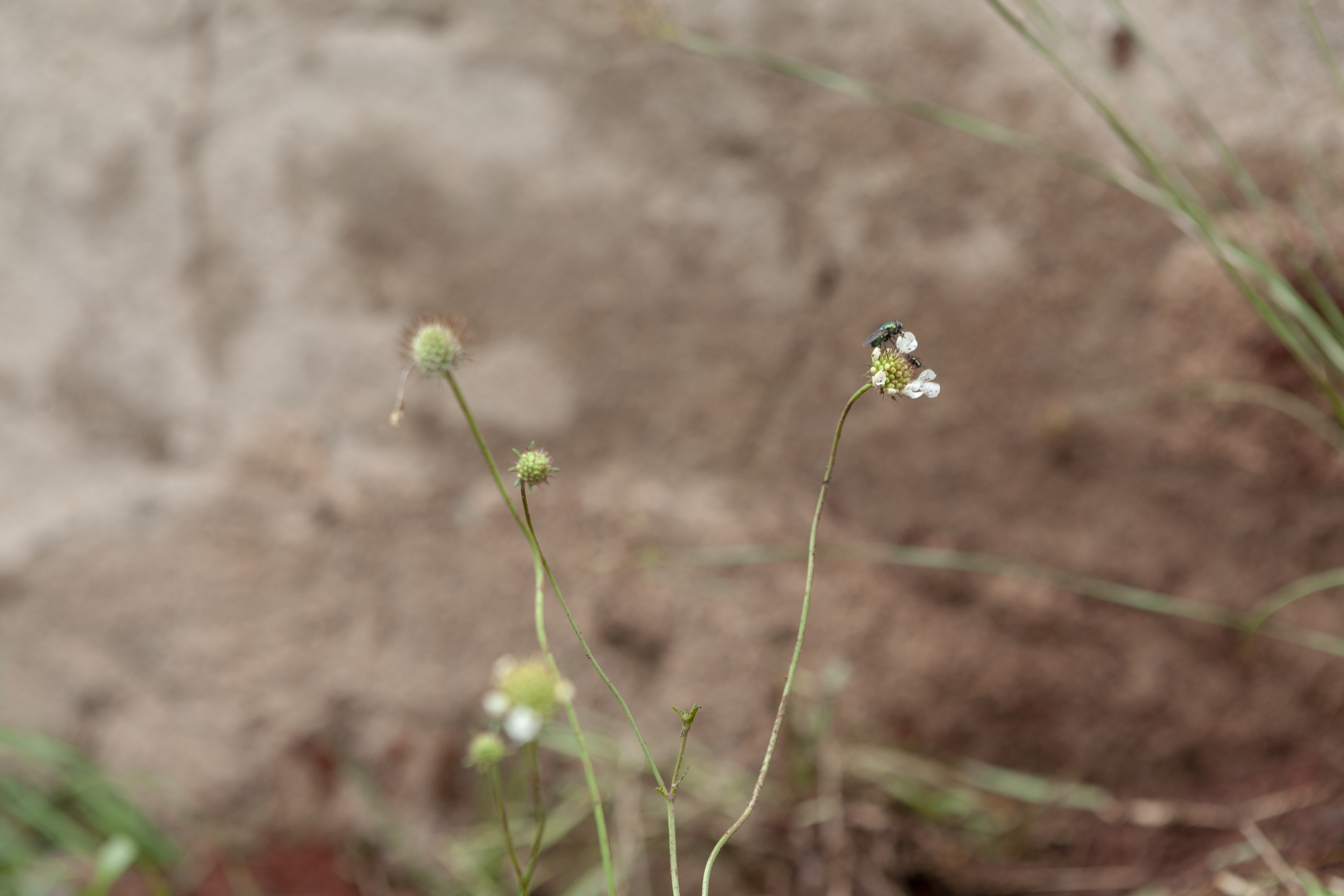Listening Garden / Rupert Foundation Social Impact Arts Awarded Project
Io Makandal | Listening Garden
Awarded ongoing site specific project at Jukskei River, Viljoen St, Johannesburg
01.10.22 – ongoing
The Listening Garden is situated along the left bank of the Jukskei River culvert at Viljoen Street, Lorentzville, Johannesburg and forms part of the Water For The Future rehabilitation pilot project area along the river.
The garden is made up of a variety of endangered grasses and plants belonging to the Soweto highveld grassland biome endemic to the area.
Text written by Chloë Reid
Johannesburg is built on a watershed, a ridge that runs roughly East to West. Rainwater ends up either in the Atlantic or the Indian Ocean, depending on which side of the ridge it falls. When it rains on the north side, water flows into the Jukskei River, absorbing the city’s stark socio-economic disparities along its course. Channelled through feeble and patchy infrastructure, the Jukskei is vulnerable to waste and sewerage from the commercial, industrial and residential environments through which it passes. In the rainy season, the residential spaces and informal settlements further along its northerly course, are especially vulnerable to the Jukskei and all it has gathered.
In Makandal’s work, these terms and the framework they engender are expressed through material choices and processes. The river, humans, industry, plant life and microorganisms are considered performers or participants within a given ecosystem. Makandal seeks to draw out these relationships through her practice, to recognise and marvel at the innate untidiness and entanglement of being. Her living sculpture is a monument to this bricolage code, composed of urban detritus and seeds from the endangered Soweto Highveld grassland biome. Originating from the area on different timescales, the debris and seeds encase and envelop one another, becoming material agents within an amalgamated ecology. Alongside the river and living sculpture, Makandal is working with children from the community to envision and develop a quiet and beautiful space through planting and seating built into a grassy embankment. Makandal’s vision of an opportunistic plantscape refuses to simmer or dwell on the destruction wrought by human intervention on the landscape, preferring instead to celebrate and encourage the symbiotic relations that flourish within dense urban environments.
The Jukskei springs in the suburb of Ellis Park, running under the city through concrete channels, until it emerges in Lorentzville. It then flows above and below ground through areas of semi-industrial development as well as precarious and under-resourced neighbourhoods such as Alexandra Township before moving on to wealthy suburbs and estates, including Dainfern and Steyn City in the North.
The first expression of the Jukskei in Lorentzville, its ‘daylight point’, is the site of Io Makandal’s ‘Listening Garden’, which builds on existing work aimed at fostering meaningful relationships between the river and the surrounding community. Through the careful landscaping of Soweto Highveld grasses endemic to the area, embankment seating and a durational ‘living sculpture’, the project offers a space for contemplation and reflection for those who live and work alongside the river.
Lorentzville is home to an impoverished, multicultural community as well as the upmarket studio and retail complex Victoria Yards, populated by artisans, artists and designers. Accessed through Victoria Yards but with public access points, the Listening Garden intersects with the work of ‘Water for the Future’ and ‘SafeStudy’. The former is an organisation that rehabilitates the Jukskei River to the social, economic and creative advantage of those who share it. The latter is an educational initiative that supports young learners in the area. The Listening Garden is designed to complement these two projects, with young people who live in Lorentzville as its primary audience and collaborators.
Listening forms an integral part of this process, both for Makandal, as she develops a sensory understanding of the site, and for the garden, where the sound of the river is clearly audible and serves as an indicator of the river’s presence and participation within a complex and changing ecosystem.
‘Entropy’, ‘third landscape’ and ‘opportunistic plantscape’ are terms that have encircled Makandal’s practice for several years and have a close bearing on her decision to position her work within this particular environment. ‘Entropy’ refers broadly to a state of randomness and disorder, the unravelling of a system or structure. Attributed to Gilles Clément, the ‘third landscape’ delineates the in-between, indeterminate space that persists within built environments. The ‘third landscape’ is perhaps more easily described by what it is not – by what this lack of specificity produces. The term ‘opportunistic plantscape’ (which is Makandal’s own) lends agency to hybrid ecologies that emerge unbidden despite urban development and human intervention. Gathered together, these slippery and mutable terms work to acknowledge the complexities underlying urban environments and motivate for a reconfiguration of the way in which humans coexist with natural resources, plant-life and micro-matter.





